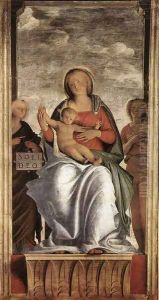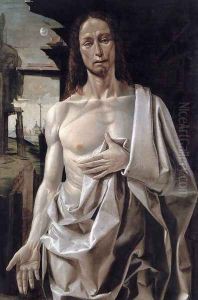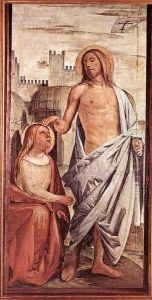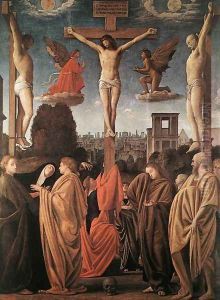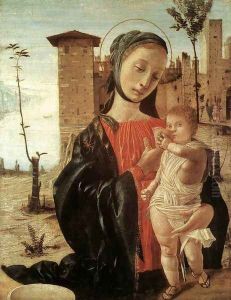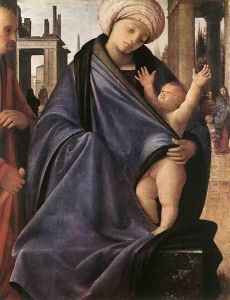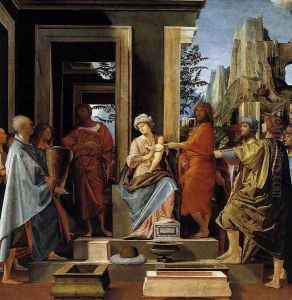Bramantino (Bartolomeo Suardi) Paintings
Bartolomeo Suardi, better known as Bramantino for his artistic and stylistic emulation of his master, Bramante, was an Italian painter and architect active during the High Renaissance. His birth year is approximated to be around 1465, but the exact date is not known. Bramantino was a Milanese by birth, and his work is deeply associated with the city of Milan and its ducal court.
Bramantino's early life is not well-documented, but it is believed that he trained under Donato Bramante, who was not only a painter but also a renowned architect. This tutelage likely had a profound influence on Bramantino's work, which often featured strong architectural elements and a mastery of perspective. Despite Bramante's influence, Bramantino developed a distinctive style characterized by a use of space and geometric composition that was unique among his contemporaries.
His works are noted for their serene and contemplative qualities, often featuring elongated figures and an innovative use of perspective. Bramantino was also influenced by the work of Leonardo da Vinci and the Lombard artistic environment, which is evident in his use of sfumato and attention to detail.
Among his known works, the 'Madonna del Latte' reflects his mastery of chiaroscuro and delicate portrayal of figures. His fresco cycles, such as those in the Sforza Castle in Milan, showcase his skills in larger-scale compositions. Bramantino also completed architectural commissions, and though few have survived, they contribute to his reputation as a versatile and intellectual artist.
His career seems to have been marked by two phases: the first characterized by a more traditional late-Gothic style and the second, from about 1507 onwards, showing a mature style influenced by the High Renaissance ideals of harmony and proportion. Despite his talent, Bramantino's work was somewhat overshadowed by the luminaries of the High Renaissance, such as Raphael and Leonardo, and it was only in the 19th and 20th centuries that his work began to be reassessed and appreciated for its originality and contribution to the Northern Italian Renaissance.
Bramantino's death occurred in 1530, and although he never achieved the fame of some of his contemporaries during his lifetime, his work has come to be recognized as an important link between the Northern Italian Gothic tradition and the High Renaissance. His legacy is preserved in several Italian museums, notably in Milan, where his works continue to be studied and admired for their quiet beauty and technical mastery.
